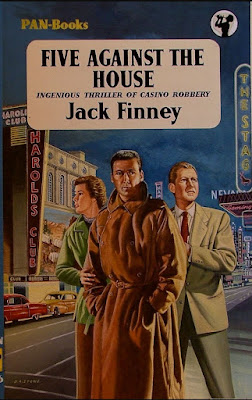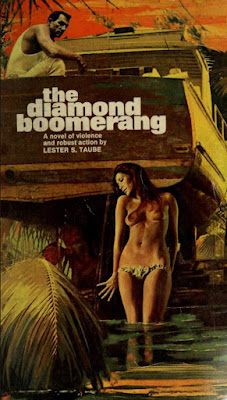Other than the opening segment, the narrative is presented in first-person by Hugh, a former Navy Lieutenant that served in WW2 on a submarine. After the way Hugh has floundered from job to job and can't find a steady romance. He often dreams of being an independent person who isn't reliant upon a job to rob him of his valuable time. There is a particular tirade that Hugh unleashes about jobs (corporate America) robbing everyone of their life. He explains that we sell our time for mere dollars and never gain any satisfaction. Finney nails the perspective of middle-class Americans and it speaks volumes even 65 years later. He was a smart guy.
Hugh runs into a man named Vic that also served on a submarine in the Navy. The two were never friends but knew each other during their time in the war. The two strike up a conversation and Vic takes Hugh to a house on the beach to meet some other veterans. There, Hugh meets three other men, each representing England, Germany, and Italy. There is also a woman there named Rosa. It is quite the motley crew. Vic then explains the purpose of their meeting.
The German, a guy named Lauffner, has found the submarine he commanded during the war. It is on the bottom of the Atlantic just a few miles from the coast. The group of men want to bring the submarine to the surface so it can be restored and operational again. But what's the purpose?
In a clever way, Finney doesn't reveal to the reader what the submarine will be used for. Granted, there is a discussion about the wealthy people on board a British passenger ship called the Queen Mary and the book's title to give it away, but the first 100 pages leaves out the details. These first half of the narrative is spent with the men getting to know one another and the work they put into the submarine. There is a side-story with Hugh competing with the Italian over Rosa.
The book's second half is the heist itself which I won't spoil for you here. In many ways the book works like 5 Against the House but on a grander scale. Finney concentrates on character development and emphasizing why these men want wealth and independence. This is a theme that I've pointed out before with Finney's literary work. Even in The Body Snatchers there is a sense of alternate perceptions and the need to transform into something else. Finney has a unique way of connecting the reader with the characters and he makes that connection in Assault on a Queen.
If you love heist novels by the likes of Donald Westlake, Dan Marlowe, and Lionel White, then the formula will please you – plan, execute, getaway. The idea of making it a nautical caper is genius. Jack Finney was an amazing storyteller and this book showcases that talent. Highly recommended! Get your copy HERE.





















